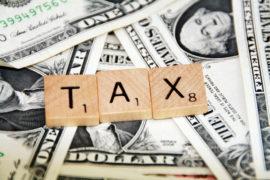
Unemployment fell to its lowest rate in 19 months in December, giving some economists a sense of optimism for the future. However, the unemployment rate remains stubbornly high at 9.4%, and the number of underemployed continues to rise. With an economy driven by consumer spending and consumers less likely to spend, a strong economic recovery is still not a certainty. See the following article from Money Morning for more on this.
The U.S. jobs market finally showed signs of improvement last month after the unemployment rate dropped to 9.4%. That was down from 9.8% in November and represented the first real change in any direction in months.
In fact, that decline pushed the national jobless rate down to its lowest level in 19 months, and created the first sense of optimism in more than a year.
Some analysts think December’s numbers represent a sea change in the U.S. jobs market, and will mark the start of sustained improvement. They cite increasing job listings in 2010, rising corporate profits in 2011 and upward revisions of previous unemployment reports as reasons the job market pain could finally be subsiding.
"All the preconditions for much better jobs growth are in place," Mark Zandi, chief economist at Moody’s Analytics’ Economy.com, told CNBC. "If history is a guide, this is about the time in the last two business cycles that business started to step up and hire."
But not everyone was so sanguine. After all, about 14.5 million people remain unemployed, and 6.4 million have been jobless for more than six months.
With a growing U.S. budget deficit and overly accommodative U.S. Federal Reserve policies encouraging overspending, many Americans are hard-pressed to believe that there’s any kind of sustainable improvement at hand – in the job market, or in the economy in general.
Claim up to $26,000 per W2 Employee
- Billions of dollars in funding available
- Funds are available to U.S. Businesses NOW
- This is not a loan. These tax credits do not need to be repaid
Many economists attribute the drop to the fact that discouraged workers have stopped looking for new jobs, which means they’re no longer counted as part of the unemployment rate. The number of discouraged workers in December rose to 1.3 million.
"Incredibly, the U.S. labor force is now smaller than it was before the recession started, though it should have grown by over 4 million workers to keep up with working-age population growth over this period," Heidi Shierholz of the Economic Policy Institute told CNN.
Many job hunters that did find positions settled for jobs that are below their skill and experience levels, and that don’t meet their salary expectations – an unsatisfactory situation known as "underemployment."
More than half of the full-time workers who were laid off between 2007 and 2009 after three or more years at their positions reported wage declines in their new full-time employment, according to the Labor Department. Of those who were rehired, 36% reported a salary cut of 20% or more.
The rate of underemployment – a typical offshoot of a labor market that’s struggling with long-term problems – reached a staggering 16.7% in December.
"The deeper the recession, the lower the wage you’re going to get in the next job and the lower the quality of the next job," Till von Wachter, a Columbia University labor economist, told The Wall Street Journal.
Usually wages fall at a slow rate. But during the most recent stretch of high unemployment, wages have experienced a much sharper decline. And with the conventional measure of joblessness – the unemployment rate – expected to remain above 9% for 2011, the downward pressure on wages will continue.
While those who are underemployed are still working, they often have to cover the lower income with stricter personal budgeting and less spending. In an economy that draws 70% of its firepower from consumer spending, a tough job market will almost certainly hamper overall economic growth – slowing an already-tepid recovery.
In the odd sort of "Catch 22" that has the economy feeding off the job market, and vice versa, that tepid recovery could lead to slower hiring, or even additional job cuts.
This article has been repubished from Money Morning.



